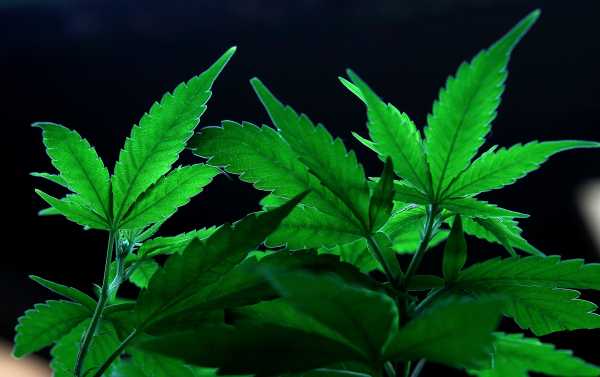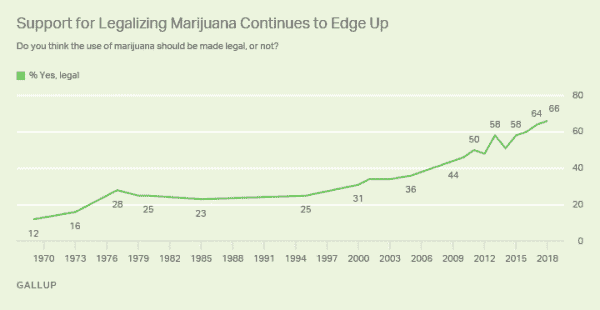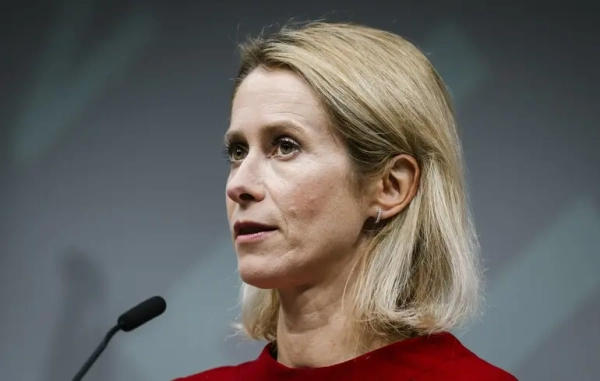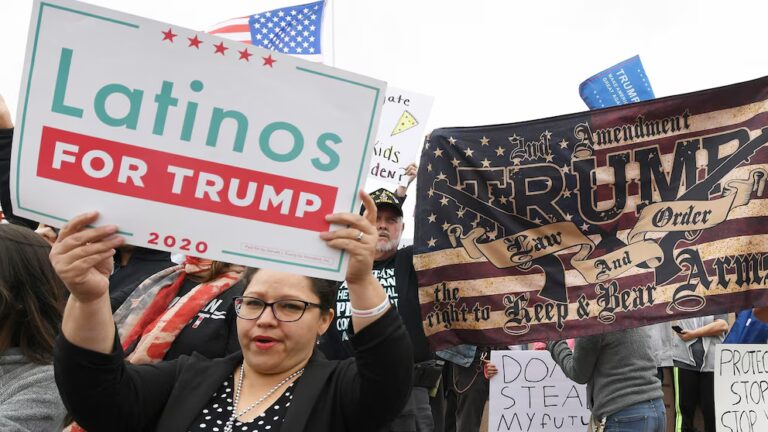
When we look back, 2018 may be the year in which marijuana legalization really won.
Canada legalized marijuana, defying international treaties (which the US is also a part of) that prohibit fully legalizing cannabis.
After legalizing marijuana in 2016, California opened the world’s biggest fully legal pot market in early 2018.
Michigan became the first state to legalize pot in the Midwest.
State legislatures, particularly New York, New Jersey, and Vermont, began taking legalization more seriously. And while Congress didn’t legalize pot at the federal level, it did legalize industrial hemp.
Together, these developments represented a tidal wave for legalization — a massive shift that’s making legal pot look more and more inevitable across the country.
Here are the five major stories of marijuana legalization this year, and why they matter.
1) Canada legalized marijuana
The biggest marijuana news of the year: Canada, led by Prime Minister Justin Trudeau and his Liberal Party, fully legalized marijuana. The move made the country the first wealthy nation to legalize cannabis and the second country in the world overall after the small South American nation of Uruguay. (The Netherlands, despite its reputation, has not technically legalized marijuana.)
The move is in part a big deal because it will offer a huge public experiment, with different provinces trying different approaches to legalizing cannabis, to see what works best — from varying tax rates and regulations to whether the government or private businesses should handle distribution and sales.
But it’s a bigger deal in the global arena because legalization is a direct violation of international drug treaties that have been in place for decades: the Single Convention on Narcotic Drugs of 1961, the Convention on Psychotropic Drugs of 1971, and the United Nations Convention against Illicit Traffic in Narcotic Drugs and Psychotropic Substances of 1988. Combined, the treaties require participants to limit and even prohibit the possession, use, trade, and distribution of drugs outside of medical and scientific purposes, and work together to stop international drug trafficking. This is international law.
There’s some debate about whether these treaties allow reforms like medical marijuana or decriminalization, but there’s no doubt they prohibit a fully legal marijuana market. (The US has gotten around this, despite states legalizing marijuana, by pointing out that cannabis is still illegal at the federal level.)
How Canada gets around this, and whether it faces any kind of diplomatic backlash, could set the groundwork for other countries looking to legalize. Will it abandon the treaties and rejoin with a caveat for pot, as Bolivia did in the 2010s for coca leaf chewing? Will it refuse to acknowledge it has violated the treaties at all, as Uruguay has done? Will it do something else entirely?
Whatever Canada does, the move creates more pressure to reform the treaties. Drug policy reformers have been trying to do this for some time — to allow new approaches to illegal drugs. But Canada’s move shows that if the international treaties aren’t changed, they may soon be rendered meaningless as countries move ahead with their own reforms anyway — even if it puts them in violation of international drug law. And that could open up the rest of the world to legalizing pot.
That’s why Canada’s move is such a big deal: It’s not just that a major country has legalized pot, but that its move could have significant implications around the world.
2) California opened the world’s biggest legal marijuana market
While Canada is the first wealthy nation to legalize, California did something else that’s perhaps as important: This year, it allowed a recreational marijuana industry in a state that’s more populous and wealthier than any legal marijuana market (including Canada).
The state’s previous medical marijuana system, in which just about anyone could stroll down to Venice Beach in Los Angeles, pay $40 or so for a medical marijuana card, and legally buy some cannabis, meant that marijuana was de facto available, so allowing recreational sales might not seem like such a big step.
But there is a vast difference in scale between Venice Beach’s local medical pot shops and the burgeoning state and likely international marijuana industry that will come with full legalization. The consequences will be not just economic, but political.
The new big marijuana industry, just like any other for-profit industry, wants to grow. The obvious pathway to doing that is legalizing pot in the dozens of states where it remains illegal. With many more customers thanks to California’s decision alone, the industry will have more profits to carry out the political campaigning and lobbying it needs to achieve this.
This is, in fact, what legalization advocates have long expected: The marijuana industry will increasingly play more of a role in the drug policy reform movement as legalization spreads.
“On some level, we have always known that,” Ethan Nadelmann, former executive director of the pro-legalization Drug Policy Alliance, told me in 2015. “And I think 2016 may be the last year in which drug policy reform organizations, driven primarily by concerns of civil liberties and civil rights and other good public policy motivations, will be able to significantly shape the legislation. And I assume that as the years progress, various industry forces will loom ever larger.”
The big problem with ballot initiatives is not a lack of public support. Based on surveys from Gallup and the Pew Research Center, more than 60 percent of Americans support marijuana legalization.

Instead, the problem has long been that ballot initiatives can cost a lot of money. Whenever I ask legal pot activists why, for example, it took so long to get medical marijuana — which now polls very well virtually everywhere — in Ohio and Florida, the response is usually that those states are very expensive to run ballot initiatives in (partly because they’re relatively large and populous).
Well, there’s now going to be a rapidly growing industry to cover those expenses. And that will likely lead to more victories in the ballot box and legislatures down the line.
This isn’t necessarily a good model for legalization. Even some legalization advocates have warned that Big Marijuana, as a for-profit industry, won’t have the public’s best health and safety interests in mind. While marijuana isn’t anywhere near as dangerous as alcohol or other illicit drugs, it does carry some risks in addiction and overuse, accidents, non-deadly overdoses that lead to mental anguish and anxiety, and, in rare cases, psychotic episodes. Ideally, regulations would curtail this industry (as Canada is trying to do), but that isn’t how legalization typically plays out in the US.
Regardless, the reality is this model will likely give legalization advocates a big ally in coming battles in legislatures and ballot boxes.
3) Michigan became the first state in the Midwest to legalize pot
In the 2018 midterm elections, Michigan legalized marijuana, making it the first state in the Midwest to do so.
Before the midterms, marijuana legalization had been left to New England and a few states out west. In fact, none of the states that had legalized until November, with the exception of Alaska, were necessarily surprising: They were generally liberal bastions like California and Massachusetts.
Then Michigan voted 56 percent to 44 percent to legalize. In doing so, Michigan voters demonstrated that legalization isn’t a progressive pipe dream, and the polls showing a majority of Americans support legalization are not just capturing a bunch of liberals in California.
4) State legislatures began taking legalization seriously
Up to this point, nine of 10 states that have legalized marijuana have done so through a ballot initiative. The one exception is Vermont, which, notably, only legalized possession, not sales.
That’s starting to change. New Jersey Gov. Phil Murphy (D) has been pushing to legalize pot, and the state legislature is looking more and more likely to take him up on the ask next year. New York Gov. Andrew Cuomo (D) came out in support of marijuana legalization, saying it’s a priority for the first 100 days of the 2019 term, with a bill coming as soon as January. And Vermont is talking about legalizing sales.
This has meaningful policy implications, since states may take different approaches to legalization than ballot initiatives so far have. But also importantly, it’s another sign that legalization is winning political clout: That typically risk-averse politicians at the state level are now pursuing legalization suggests it may not be such a politically risky policy idea now.
And that could mean more states will legalize in the years to come, starting, perhaps, with New York and New Jersey.
5) The federal government legalized hemp
President Donald Trump, Senate Majority Leader Mitch McConnell, and House Speaker Paul Ryan did not legalize marijuana this year — not exactly a huge surprise. But they did legalize hemp, a non-intoxicating form of cannabis.
Hemp is derived from the cannabis plant, but it doesn’t get you high. Instead, it’s typically used for its fiber to make all kinds of products — food, paper, cardboard, carpets, clothes, rope, CBD, and more.
But hemp production and sales have historically been banned under federal drug laws that also prohibit marijuana. (You might see some hemp products in some places in the US, but those usually come from technically illegal sources, outside the country, or places that got narrow exceptions under recent pilot programs.) The new law, pushed particularly by McConnell, legalized hemp, letting farmers grow it and putting state and federal agencies in charge of regulation.
One way to think about this: Hemp legalization is now the floor for cannabis politics. It’s now acceptable for someone as conservative as McConnell to support legalizing hemp. That’s significant movement, particularly for Republicans, from just a few years ago. (Not to mention John Boehner, the former Republican speaker of the House, is now on a legal pot company’s board of advisers.)
Meanwhile, the ceiling for what federal lawmakers feel comfortable supporting has moved up as well. Over the past couple years, more and more lawmakers, including people who’ll very likely run for president in 2020 like Bernie Sanders and Cory Booker, have signed onto legislation that would legalize marijuana at the federal level. This is increasingly becoming a mainstream position for Democrats.
This gets to a strange element of marijuana legalization in the US: Even as states legalize under their own laws, pot remains illegal at the federal level. So federal law enforcement could, in theory, crack down on state-legal marijuana businesses and attempt to shut them down. Changing that federal law remains a big goal for marijuana legalization advocates.
So the battle for marijuana legalization isn’t won yet. But when you add up all these shifts, the trend sure seems to be moving in a single direction. And with all that happened in 2018, it sure looks like this year was the one that really solidified the trend.
For more on marijuana legalization, read Vox’s explainer.
Sourse: vox.com






